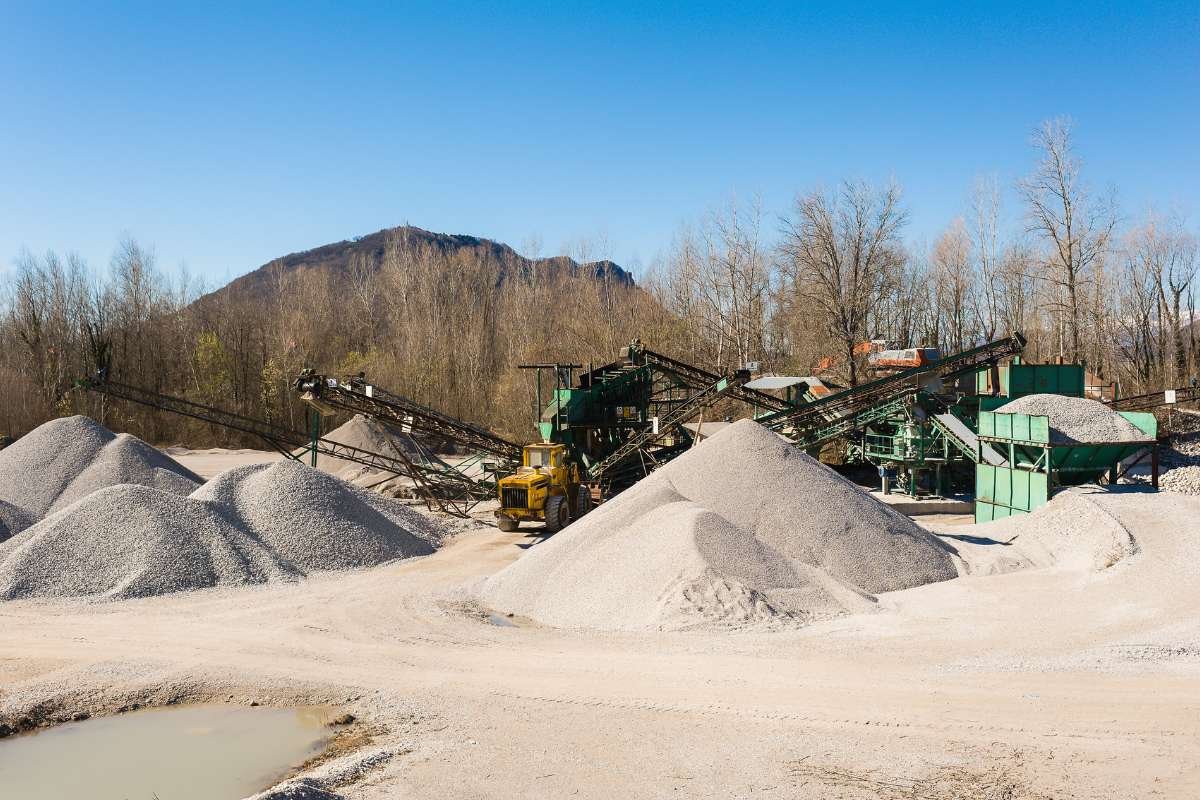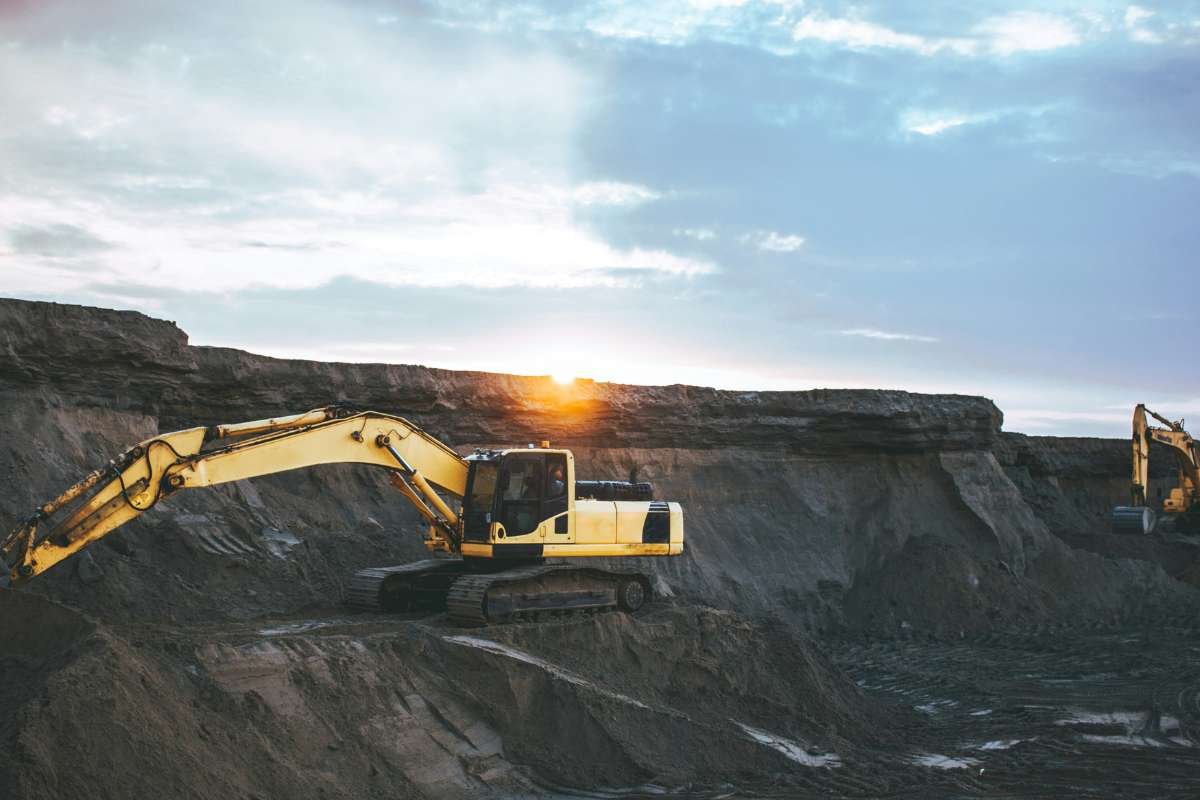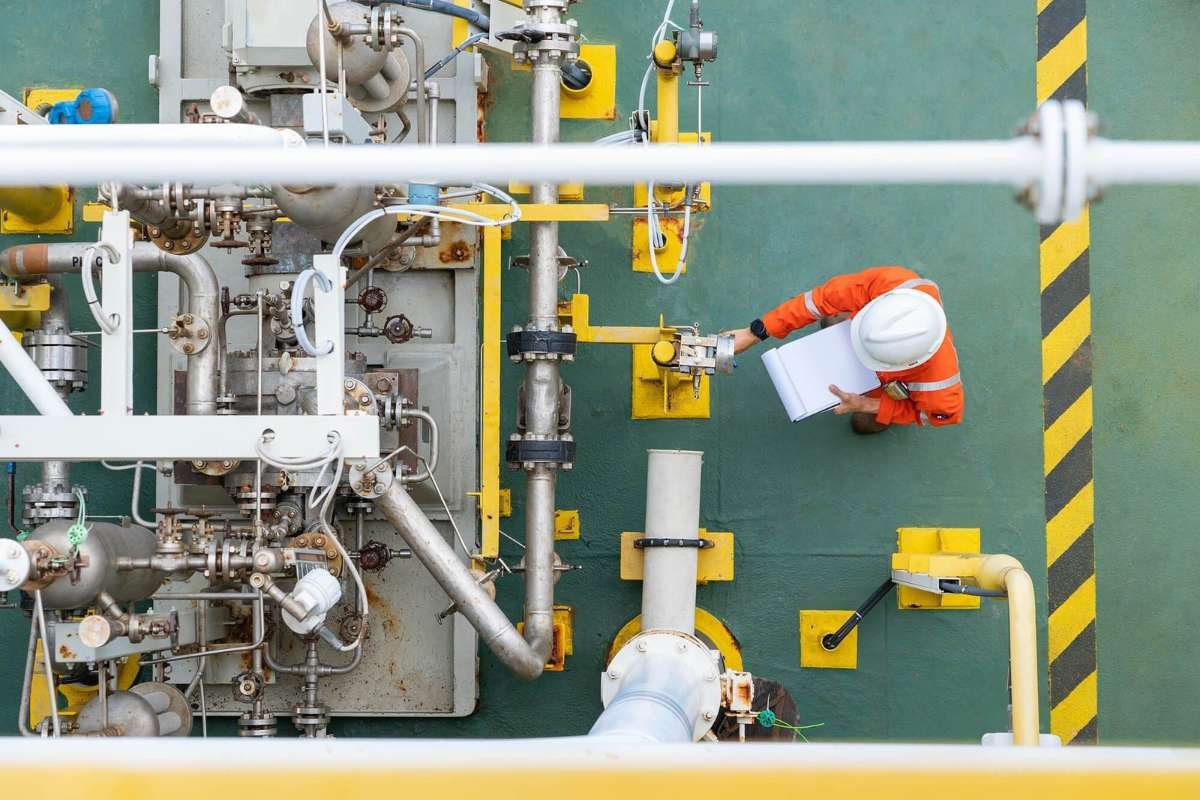The Next Frontier in Sustainable Logistics
Few industries face as many intersecting pressures as logistics. Rising operating costs, tightening environmental regulations, and increasing customer expectations are converging to redefine what operational excellence looks like. At the heart of this transformation is a growing realisation: modular storage systems aren’t just innovative solutions—they represent a structural shift in how logistics must be designed, built, and managed to support long-term sustainability.
Executives are no longer just asking how fast or how cheap their networks can operate. They’re asking how resilient, transparent, and environmentally responsible those systems are, and what infrastructure changes are needed to support that shift.
While transportation often takes the spotlight in sustainability discussions, a quieter, but equally important, conversation is happening inside warehouses, fulfilment centres, and distribution hubs. Storage design, containment formats, and material reuse policies are quickly becoming indicators of whether a business is future-fit or lagging behind.
In this new landscape, smarter space management isn’t just a technical upgrade. It’s part of a broader strategy to align efficiency with accountability, and to embed sustainability into the operational core, not just the corporate narrative.
Why Modular Operational Space Is Gaining Strategic Importance?
In the traditional logistics model, warehouse layouts and container formats remained fixed for years, sometimes decades. But as supply chains decentralise and product mixes shift weekly, relying solely on static infrastructure has become a liability. Modular storage systems offer the flexibility needed to adapt quickly to these evolving demands.
Modular stock handling systems offer a flexible, scalable alternative. By using containers, pallet boxes and shelving systems that adapt to new footprints, product types, and automation environments, companies unlock faster reconfiguration and reduced downtime.
Insight: Storage is no longer just a physical space, it’s a strategic variable in carbon accounting, operational speed, and even brand credibility.
From stackable containers to mobile shelving, modularity enables a more responsive logistics operation, one that can flex with demand surges, seasonal changes, and unpredictable supplier dynamics.
Rethinking Pallets: From Wood to Heavy-Duty Plastic

Nowhere is this shift clearer than in the replacement of wooden pallets and boxes with heavy-duty plastic pallet boxes. Long regarded as an afterthought, containment hardware is now being re-evaluated for its durability, hygiene and environmental impact.
Heavy-duty plastic systems are lighter, more uniform, easier to sanitise and last significantly longer than wooden alternatives. They’re also more compatible with automation, a major advantage as warehouses integrate robotic systems that require dimensional standardisation.
Hard Truth #1: Most logistics firms can’t scale sustainably because their warehouses weren’t designed to adapt; they were built to store.
In sectors like food and pharma, the shift is even more urgent. Hygiene isn’t a nice-to-have, it’s non-negotiable. And containers that can’t meet compliance become risk centres, not assets.
Why Standardisation Is the Foundation of Scalable Logistics?
As supply chains become more fragmented and time-sensitive, the need for interoperability has never been greater. Yet many logistics systems still operate with mismatched container types, legacy formats, and non-standardised pallet designs, remnants of an earlier era when local optimisation mattered more than system-wide cohesion.
Operational fragmentation creates friction. When inbound packaging doesn’t align with internal racking, when containers differ in size and load-bearing strength, or when fulfilment teams must manually adjust to mismatched units, performance suffers. Modular storage systems help eliminate these issues by standardizing formats, reducing errors, and silently lowering costs through improved operational velocity.
Standardisation isn’t just about aesthetics, it’s about speed, automation compatibility, and operational resilience. Heavy-duty modular containers, with their consistent dimensions and structural integrity, are enabling smoother handoffs between warehouse, transport and retail. They reduce the need for reloading, repackaging or last-minute corrections.
In a logistics ecosystem that spans multiple partners, platforms, and pressure points, uniformity has become a strategic advantage. It allows modularity to scale and innovation to integrate without adding chaos.
This is precisely why plastic pallet boxes UK distributors increasingly depend on are becoming foundational to scalable logistics performance, especially where compliance, automation, and hygiene standards must align under pressure.
The Role of Stackability in Warehouse Efficiency
Modular storage systems are often overlooked as a design feature. But in constrained urban warehouses, verticality is gold. The ability to safely stack full containers up to three or four levels, without specialised racking, dramatically improves storage density.
This efficiency also translates into transportation savings. Standardised containers make better use of truck space, reduce shifting during transit, and lower damage-related losses.
One UK-based food distributor reduced damage-related product losses by 28% within six months of switching to stackable hygienic pallet boxes.
When multiplied across a network of hubs and spokes, that impact becomes strategic, not operational.
That’s why stackability is no longer just a convenience, it’s a core pillar of effective warehouse optimisation.
Inside the Carbon Footprint of Modern Storage
Stock handling has historically been left out of most carbon footprint models, but that’s starting to change. Energy use in temperature-controlled environments, container reuse rates, and spatial efficiency now factor into many corporate carbon disclosures.
The embodied carbon of legacy materials like metal or wood can be significant, particularly when disposal and replacement rates are high. Plastic, often criticised for sustainability, proves more efficient in closed-loop, reusable formats, especially when paired with recycling programs.
Statystyka: According to the World Bank Logistics Performance Index 2023, warehouse efficiency continues to be the bottleneck in high-performing nations.
Efficient space management = faster movement, shorter dwell times, fewer emissions. It’s not about what’s stored, it’s about how and where.
According to recent analysis by McKinsey, logistics companies that adopt modular and reusable containment formats can reduce direct carbon emissions by up to 15% over five years, while improving ESG reporting accuracy by nearly 40%. These dual gains are making sustainability a measurable asset in logistics strategy.
From Static Warehousing to Configurable Infrastructure
For decades, warehousing was built on predictability, fixed layouts, static zones, single-use materials. But volatility is now the norm. Inventory changes weekly. Labour availability fluctuates. ESG criteria evolve mid-cycle. Static infrastructure simply can’t keep up.
Modern logistics environments are shifting toward configurable design, where modularity becomes the core logic. Containers aren’t just reusable, they’re repositionable. Floor plans aren’t fixed, they’re fluid. Racks, bins and bulk boxes are selected not just for volume, but for how well they integrate with dynamic workflows.
This isn’t speculative. It’s already happening in top-performing logistics networks. Flexibility is replacing footprint as the dominant performance driver. Businesses no longer ask “How big is your warehouse?”, they ask “How fast can you reconfigure it without disruption?”
This operational agility is what separates scalable logistics ecosystems from those stuck in reactive mode.
Decarbonizing Logistics – From Theory to Reality
Sustainability goals are now being codified into operations. From CO₂ intensity per shipment to full-scope carbon tracking, logistics leaders are being held to hard metrics.
But decarbonisation isn’t just about electrifying trucks or sourcing local. It’s about redesigning every layer of infrastructure, including what’s behind the loading dock.
As McKinsey outlines in its decarbonizing logistics report, “structural changes in packaging and warehousing are as important as fleet electrification in driving long-term carbon reductions” – McKinsey & Company, “Decarbonizing Logistics” (2024).
Modular storage systems reduce rework, limit spoilage, and cut idling time, all of which affect emissions. They’re not a silver bullet, but they are a scalable lever.
How Circular Design Fuels Operational Agility?
The concept of circular logistics, where assets flow in loops, not lines, has migrated from sustainability reports into operations.
Reusable plastic containers, when tracked and rotated efficiently, offer better cost-to-use ratios and lower environmental impact than disposables. Modular systems, when integrated across suppliers and clients, reduce onboarding friction and training costs.
Hard Truth #2: A poorly optimised container system costs more in compliance than in capital.
And as product lines fragment and SKUs multiply, agility becomes the new efficiency. Circular, modular systems make reconfiguration the norm, not the exception.
Case Study: UK Retailers Using Pallet Box Systems

The shift to smarter containment isn’t theoretical. Across the UK, major grocery and general merchandise retailers are actively replacing traditional wooden and mixed-material inventory infrastructure systems with hygienic plastic pallet boxes, not for appearance, but for performance.
In one national retail group, a trial deployment of reusable plastic pallet systems was implemented in over 30 urban locations. The aim was simple: reduce transit damage, improve shelf replenishment speed, and meet growing hygiene requirements across the chilled chain.
Over six months, the data spoke clearly. Damage-related product loss fell by 28%. Misplaced inventory incidents dropped significantly due to the colour-coded labelling system. Loading times improved thanks to uniform dimensions and easier stackability, allowing store teams to clear bays faster and reduce disruption during peak delivery hours.
The real win? Compliance. With increased regulatory focus on cleanliness and cross-contamination, these upgraded containers made it easier to meet health inspections without additional operational overhead. Logistics leaders within the group called it “the most cost-neutral compliance improvement in the last two years.”
ESG Pressure and Regulatory Readiness
From the EU Green Deal to mandatory scope 3 disclosures, the ESG wave is cresting over logistics. That includes warehouse emissions, material usage, hygiene practices and container lifecycle.
This operational shift is also reflected in how industry leaders are investing. As highlighted in a recent green logistics technology overview by Forbes, companies are increasingly treating warehouse and storage upgrades as a core part of their sustainability strategy, not an afterthought. From air quality management to reusable container systems, the warehouse is becoming one of the most measurable components of ESG compliance.
These shifts are particularly evident in European and UK markets, where regulatory readiness is no longer voluntary. It’s an expectation. And without modular, trackable, and standardised systems, reporting becomes guesswork, which opens the door to risk.
Companies now need to prove that their supply chain is not only functional, but accountable, down to the last crate.
Modular, reusable systems provide clean audit trails and predictable compliance. Standard formats = measurable units. Reuse cycles = clean metrics. That transparency has become a strategic asset.
Rhetorical Question: If your supply chain is modular, but your operational space isn’t, are you really future-ready?
From Hygiene to Compliance – Why Pharma Leads the Shift
The pharmaceutical industry has long treated storage as critical infrastructure. That mindset is now spreading.
Temperature, contamination risk, and material integrity are not theoretical, they’re regulated. And hygienic storage is no longer defined by materials alone, but by cleanability, stackability, and traceability.
Hygienic stock handling containers, once reserved for niche use cases, are now appearing in broader operational roles, from lab sample transport to hospital inventory.
What starts in pharma rarely stays there. The rest of the logistics world is catching up.
The same container types and hygiene protocols are now appearing in grocery logistics, high-risk manufacturing, and medical equipment distribution.
Research also indicates that switching from traditional wooden pallets to hygienic, heavy-duty plastic boxes can lead to 40% fewer damaged goods and a 25% drop in cross-contamination risks, particularly in the food and pharmaceutical sectors. These gains aren’t just operational, they align directly with global ESG metrics.
Alison Handling and the Modular Advantage

Amid this operational shift, companies like Alison Handling have become strategic partners in B2B transformation.
As a UK-based storage supplier, Alison Handling works with clients across food production, pharma, manufacturing and ecommerce to implement modular storage systems that meet the modern demands of compliance, efficiency, and circularity.
Their focus isn’t on novelty, it’s on longevity.
Durability over disposability. Standardisation over improvisation.
Design that matches how modern operations actually function.
It’s not about building bigger warehouses, it’s about making every cubic metre do more.
Storage-as-a-Service? The Emergence of Adaptive Infrastructure Models
As logistics infrastructure becomes smarter, a new model is emerging that treats space management not as an asset but as a service layer. Much like IT moved from hardware to cloud environments, inventory infrastructure is being reimagined as something flexible, data-rich, and outcomes-driven.
This shift is visible in modular racking rentals, trackable pallet pooling systems, and returnable container loops managed by third parties. Instead of owning fixed formats, businesses subscribe to adaptive operational space capacity, which scales up or down depending on throughput.
The benefits are both financial and environmental: lower capex, higher utilisation, reduced waste. For businesses managing variable SKUs and unpredictable flows, this model reduces friction and unlocks speed, all without additional physical expansion.
The future of logistics may not be in owning smarter stock handling, but in accessing it as a configurable service.
The Interplay Between Automation and Container Design
Automation is no longer a futuristic luxury, it’s an operational necessity. But what’s less visible is how the effectiveness of that automation depends heavily on container compatibility.
Robotic systems, pickers, and conveyors are calibrated for standardised dimensions, friction coefficients, and load tolerances. Poorly optimised containers reduce efficiency, causing downtime, misalignments, and costly recalibrations.
Modular storage systems, especially modular plastic units, solve this by aligning container form with machine logic. Their uniformity, durability, and clean edges make them ideal for automation in tight warehouse conditions.
The result is smoother throughput, fewer stoppages, and a supply chain where humans and machines can operate side-by-side, without manual correction.
This convergence of robotics and space management design is what defines the cutting edge of warehouse performance in the decade ahead.
Smarter Storage as a Competitive Edge in 2030
Looking ahead, the logistics leaders of 2030 will be those who stop thinking of inventory infrastructure as static infrastructure and start treating it as a competitive instrument. As volatility becomes a permanent feature of global trade, companies will be judged not by how large their warehouse is, but by how intelligently it functions.
Hygienic, stackable, and automation-ready modular storage systems are emerging as the new baseline. They reduce complexity, support ESG compliance, enable better data tracking, reduce carbon impact, and accelerate change adoption across networks.
But perhaps more importantly, they give companies permission to rethink logistics from the inside out.
The businesses that master this internal revolution will gain faster recovery from disruption, tighter alignment between procurement and distribution, and better leverage in partnerships that demand transparency and traceability.
Smarter stock handling isn’t glamorous. It doesn’t make headlines. But it quietly powers the agility, credibility, and cost-efficiency that modern B2B ecosystems demand.
In a world where space is scarce, expectations are high, and resilience is everything, the companies that treat operational space as strategic will be the ones writing the next chapter of logistics.
In the future, competitive advantage won’t belong to those who own the most space, but to those who use every cubic metre with purpose


















